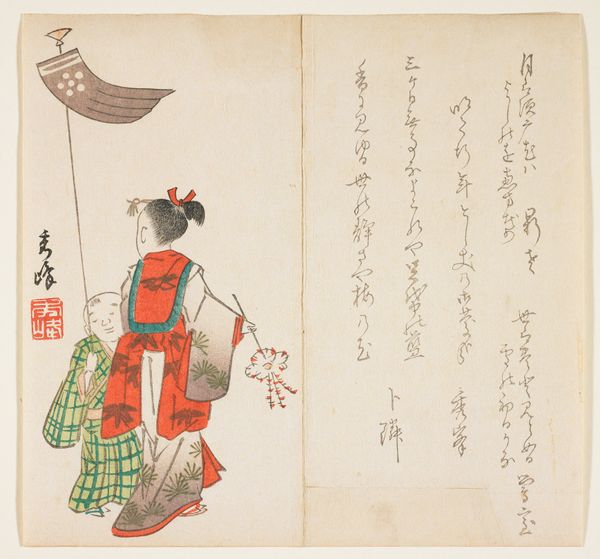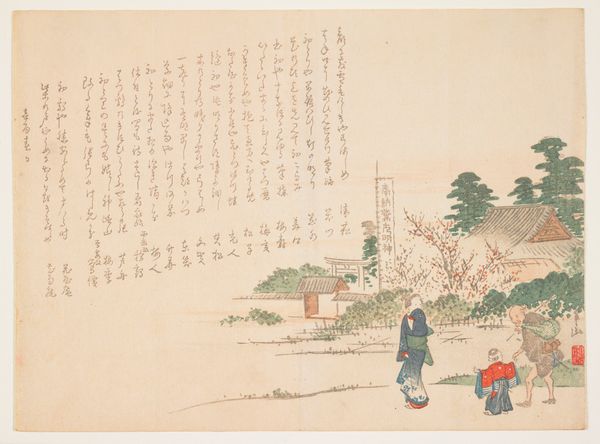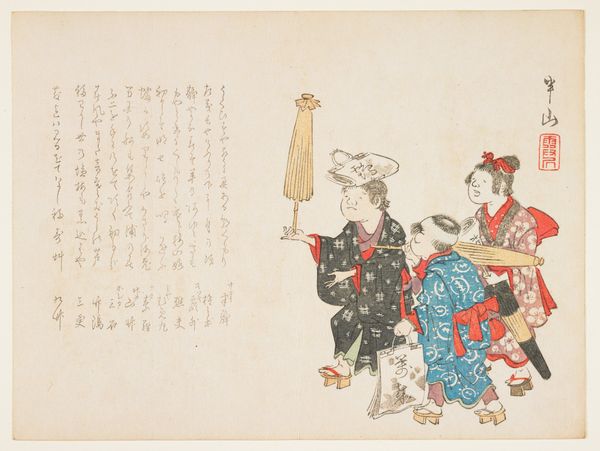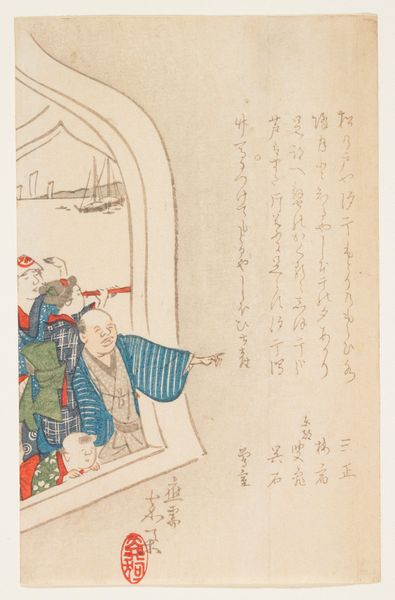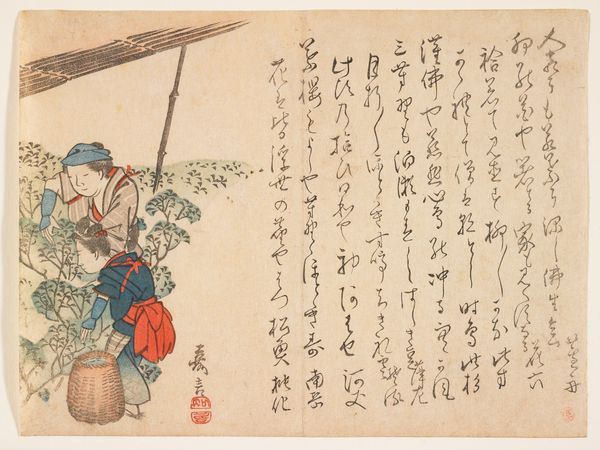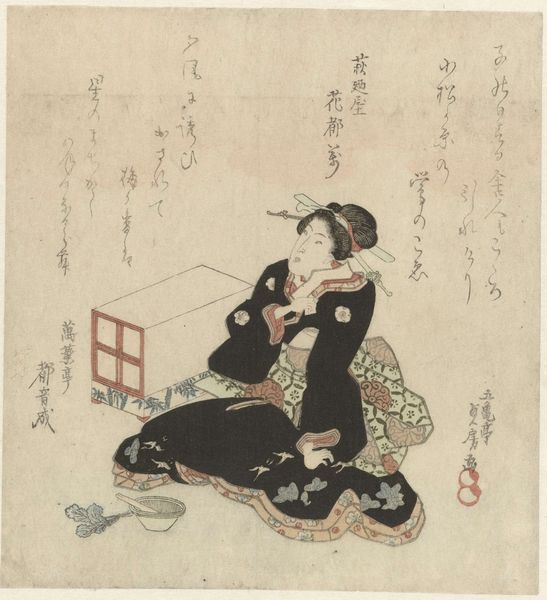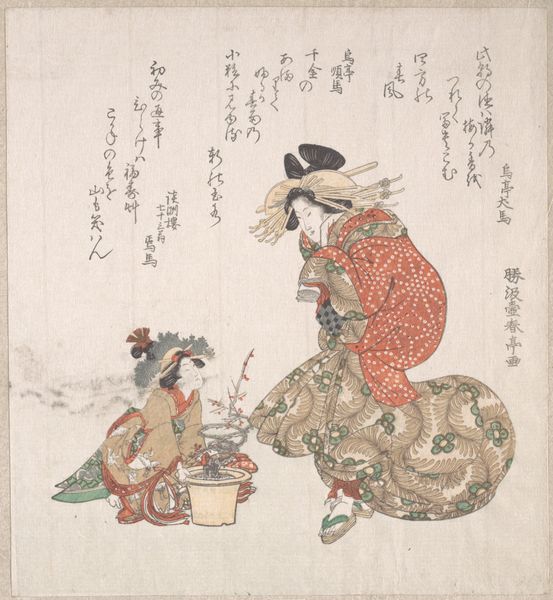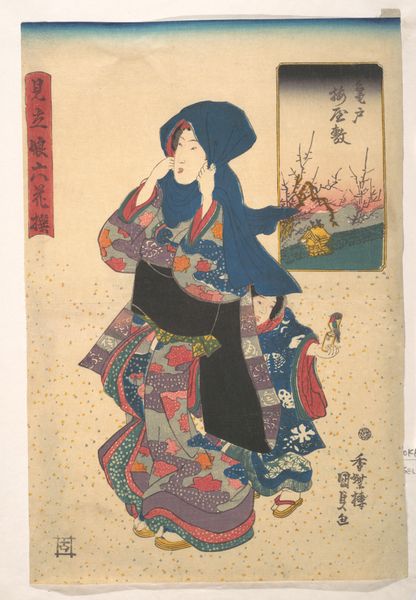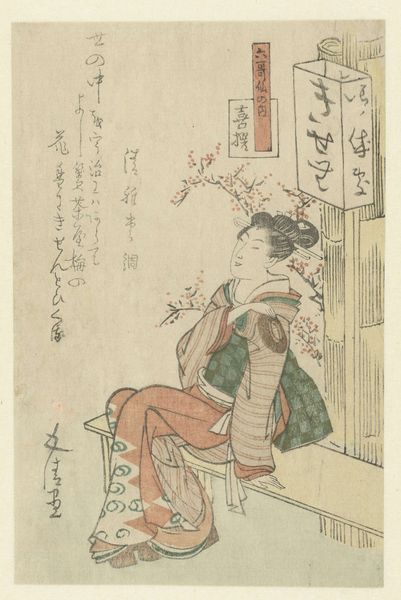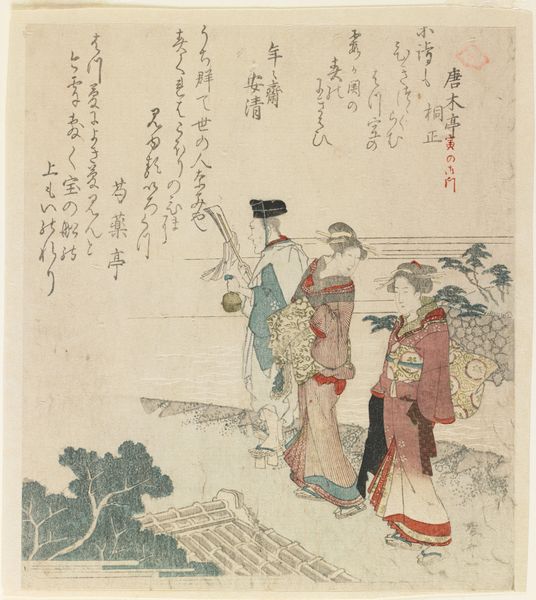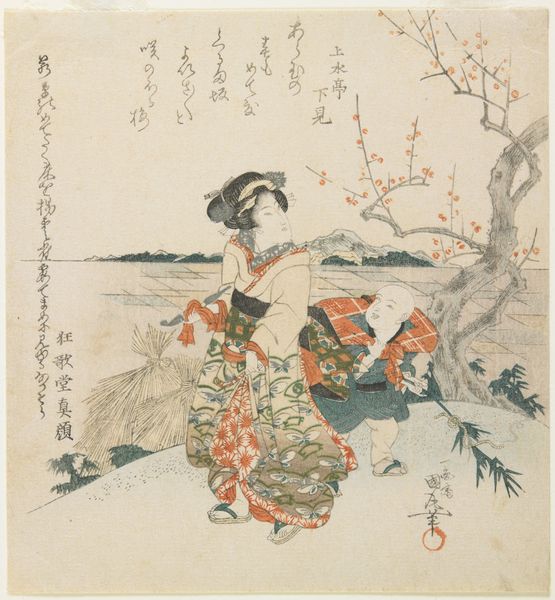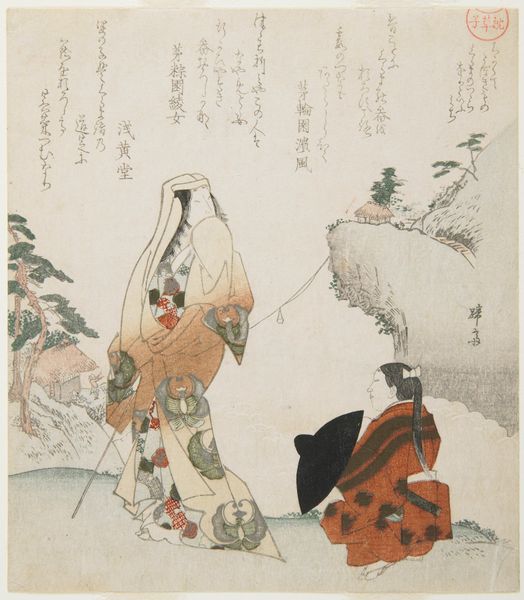
(Two boys and a pine tree) c. 1848 - 1853
0:00
0:00
print, ink, woodblock-print
#
narrative-art
#
ink painting
# print
#
asian-art
#
landscape
#
ukiyo-e
#
figuration
#
ink
#
woodblock-print
Dimensions: 7 5/16 x 6 1/8 in. (18.6 x 15.6 cm) (image, sheet)
Copyright: Public Domain
Editor: So, we’re looking at a woodblock print titled "(Two boys and a pine tree)" by Hanzan, dating back to around 1848-1853. The composition feels quite intimate, like a captured moment. I’m struck by how much blank space there is around the figures. What historical insights can you offer? Curator: The negative space is a crucial element in Ukiyo-e prints like this, framing the narrative and inviting contemplation. Considering this piece historically, we must think about the social context of Edo-period Japan, where Ukiyo-e flourished as a popular art form, particularly among the merchant class. These prints often depicted scenes of everyday life. What kind of life do you think it depicts? Editor: Maybe a slice of middle-class leisure, like boys playing in a garden? The pine tree seems quite deliberately placed. Curator: Precisely. Pine trees, like cherry blossoms, held symbolic meaning. Longevity and steadfastness, important values during this time, can be represented through them. The children playing suggests not just leisure but also the continuity of social and family structures that underpinned the established political regime. Note the writing in the woodblock: does that provide context about what it meant? Editor: I can't read the writing, but does that indicate an audience more inclined to text than images alone, reflecting broader access to literacy in certain segments of society? Curator: Good observation. Ukiyo-e prints were accessible due to their relatively low cost. Their role as mass communication and cultural reflection meant artists were in dialogue with public sentiment. Could the playful image here offer a commentary on idealized childhood, presented by cultural institutions in that time? Editor: So the artwork engages with idealized forms, mirroring the regime’s need to cultivate loyalty through promoting values? It brings new meanings to the narrative. Curator: Exactly, it allows us to delve deeper and appreciate Ukiyo-e not merely as a picture of its time but a negotiation with social expectation. It makes me wonder what future generations will derive from our digital image feeds, when used in cultural institutions! Editor: Fascinating. It's made me think a lot about the purpose behind this, and the socio-political influences that would affect Ukiyo-e's audiences. Thanks!
Comments
No comments
Be the first to comment and join the conversation on the ultimate creative platform.

